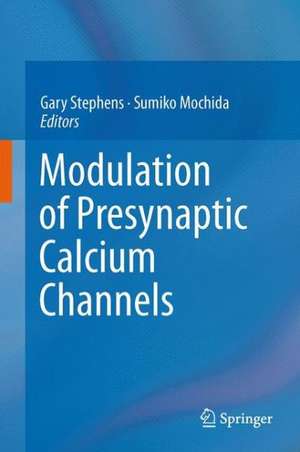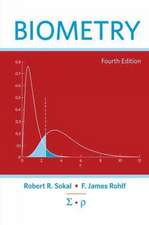Modulation of Presynaptic Calcium Channels
Editat de Gary Stephens, Sumiko Mochidaen Limba Engleză Hardback – 8 mai 2013
| Toate formatele și edițiile | Preț | Express |
|---|---|---|
| Paperback (1) | 1098.84 lei 43-57 zile | |
| SPRINGER NETHERLANDS – 19 mai 2015 | 1098.84 lei 43-57 zile | |
| Hardback (1) | 1112.17 lei 43-57 zile | |
| SPRINGER NETHERLANDS – 8 mai 2013 | 1112.17 lei 43-57 zile |
Preț: 1112.17 lei
Preț vechi: 1170.71 lei
-5% Nou
Puncte Express: 1668
Preț estimativ în valută:
212.82€ • 222.76$ • 177.13£
212.82€ • 222.76$ • 177.13£
Carte tipărită la comandă
Livrare economică 31 martie-14 aprilie
Preluare comenzi: 021 569.72.76
Specificații
ISBN-13: 9789400763333
ISBN-10: 9400763336
Pagini: 380
Ilustrații: XII, 365 p.
Dimensiuni: 155 x 235 x 26 mm
Greutate: 0.86 kg
Ediția:2013
Editura: SPRINGER NETHERLANDS
Colecția Springer
Locul publicării:Dordrecht, Netherlands
ISBN-10: 9400763336
Pagini: 380
Ilustrații: XII, 365 p.
Dimensiuni: 155 x 235 x 26 mm
Greutate: 0.86 kg
Ediția:2013
Editura: SPRINGER NETHERLANDS
Colecția Springer
Locul publicării:Dordrecht, Netherlands
Public țintă
ResearchCuprins
Spatial and temporal regulation of Ca2+ channels.- Neuronal functions of auxiliary calcium channel subunits.- Reciprocal regulation of neuronal calcium channels by synaptic proteins.- Molecular architecture of Ca2+ channel complexes organized by β subunits in presynaptic active zones.- Control of CaV2 calcium channels and neurosecretion by heterotrimeric G protein coupled receptors.- Regulation of CaV2 channels by small GTPases.- Protein interaction partners of Cav2.3 R-type voltage-gated calcium channels.- Voltage-gated calcium channel signaling to the nucleus.- Presynaptic Ca2+ influx and its modulation at auditory calyceal terminals.- Use of synthetic Ca2+ channel peptides to study presynaptic function.- Impact of a loss-of-function P/Q type Ca2+ channel mutation on excitatory synaptic control of cerebellar Purkinje neurons.- CaV2.1 (P/Q) voltage activated Ca2+ channels and synaptic transmission in genetic and autoimmune diseases.- Splicing and editing to customize CaV channel structures for optimal neural function.- Presynaptic calcium channels as drug targets for pain.- Sensory pathway modulation by calcium channel a2d1 subunit.
Textul de pe ultima copertă
This book brings together leading international experts to discuss recent advances in the regulation of presynaptic voltage-gated Ca2+ channels (VGCCs), key signal transducers that represent one of the most widely modulated proteins in the body. It is now commonly accepted that presence of the VGCC complex defines an excitable cell. At a basic level, VGCCs transduce membrane potential change to chemical neurotransmitter release at presynaptic terminals. However, on-going scientific research, presented here, in areas including neuroscience, electrophysiology, pharmacology, biochemistry and, increasingly, proteomics, has revealed the widespread nature of modulation of the presynaptic VGCC complex.
This book reviews and discusses the following topics:
This book reviews and discusses the following topics:
- The fundamental role of the VGCC pore-forming CaVa subunit, and some of their binding partners, in presynaptic function and synaptic plasticity.
- Modulation of presynaptic CaVa subunits by auxiliary CaVb and a2d subunits and by their major interaction partners, such as active zone scaffolding proteins, synaptic proteins, G proteins and small GTPases, which, together, contribute to the VGCC proteome.
- Work at the cutting edge of research, including how direct electrophysiology recordings from presynaptic terminals and introduction of synthetic CaVa peptides into presynaptic terminals has expanded our knowledge of VGCC function.
- Evidence emerging over the last decade demonstrating that VGCC subunits represent bona fide molecular targets for therapeutic drug discovery. This development is illustrated by the introduction of the CaV2.2 blocker ziconotide, which represents an important proof-of-concept, but is best exemplified by the emergence of gabapentinoids, which bind the VGCC auxiliary a2d subunit, as first-line treatments for chronic neuropathic pain.
Caracteristici
Written by the world's leading experts A highly important scientific field Clear relevance to current therapeutic drug development











